It was the ‘biggest and noisiest crowd’ that London ever saw.
On August 15, 1945, tens of thousands of people flooded the streets of the British capital and elsewhere to celebrate the end of the Second World War.
As had been expected for days up to that joyous moment, the rulers of Japan had finally surrendered after the United States’ use of the horrifying atom bomb on the cities of Hiroshima and Nagasaki.
These acts of mass slaughter had helped bring an end to a conflict which had left more than 380,000 British troops dead in combat.
Although the bulk of those who died were killed in the fight against Nazi Germany, 30,000 lost their lives fighting in the Far East.
Thousands of more would live for the rest of their lives with the trauma of the horrors they endured as prisoners of the Japanese.
So, as archive pictures show, on VJ Day itself – when the surrender of Japan was formally announced – and on the days leading up to it, Britons in London and elsewhere celebrated peace joyously.
The Mail said in its jubilant reporting that London had gone ‘crazy’.
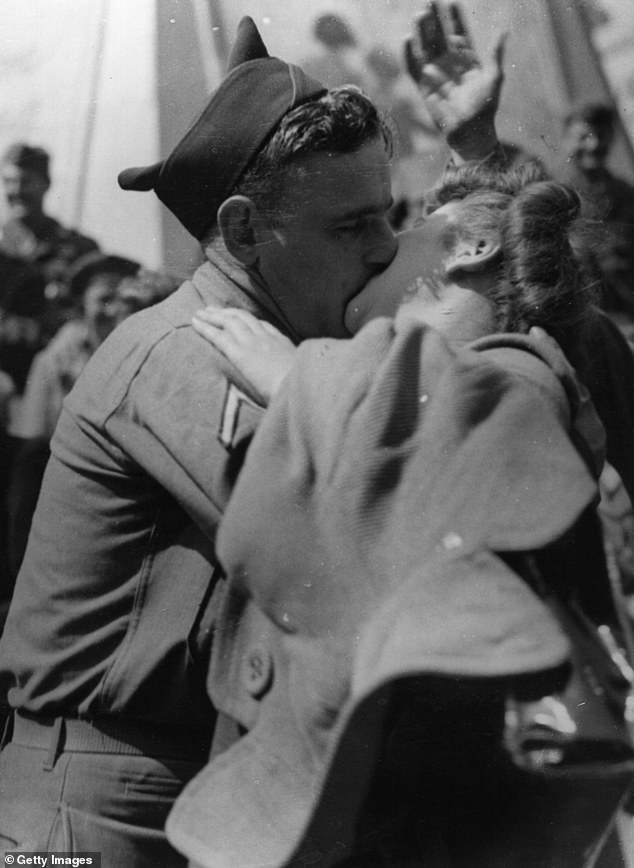
In the excitement of the celebrations following news of Japan’s surrender, an American soldier kisses a London girl in Piccadilly Circus, August 10, 1945
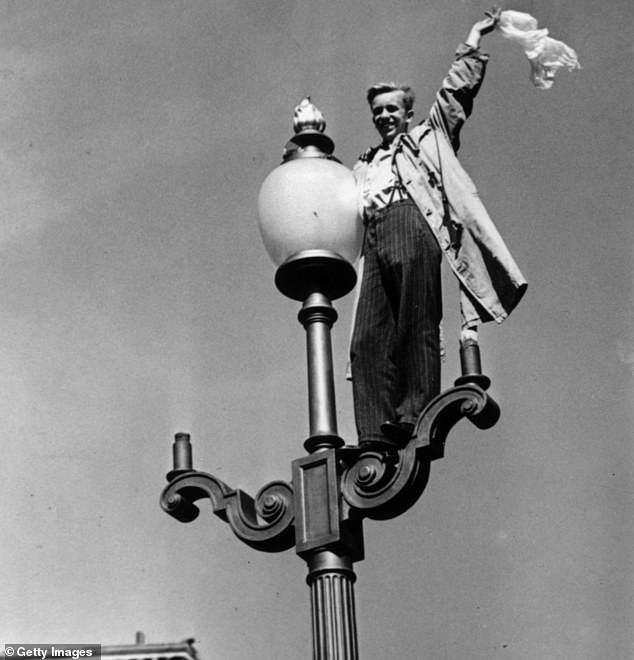
A man waving from a lamppost to the crowds below in Piccadilly Circus, London, during the celebrations following the news of Japan’s surrender, August 10, 1945
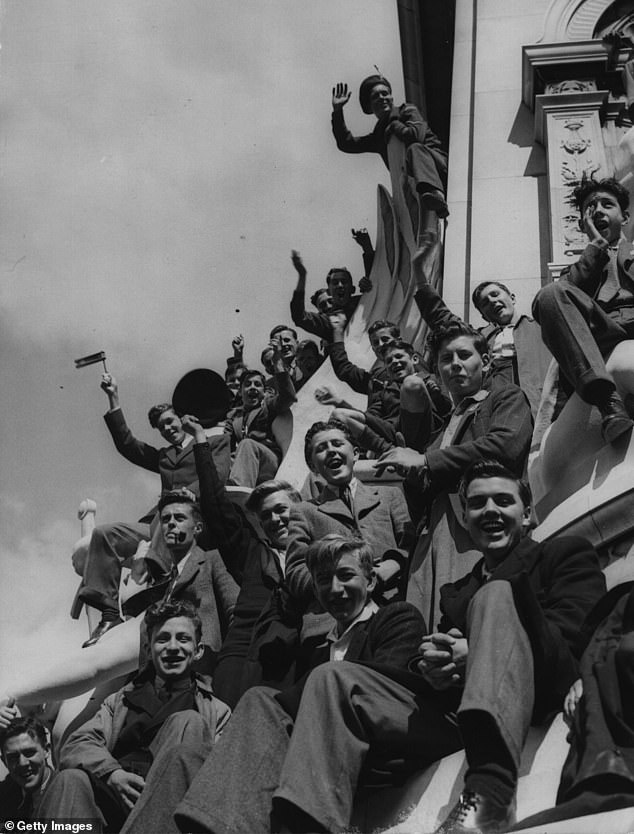
The Victoria Monument outside Buckingham Palace became a grandstand for jubilant spectators waiting to catch a glimpse of the Royal family on VJ Day, August 15, 1945
The front-page story on August 16 went on: ‘Never before has Piccadilly circus staged such scenes.
‘Just after midnight bonfires were lit, which quickly blazed, and the enthusiastic crowds – as thick as ever at 1am – saw to it that the fires were never short of fuel.
‘The damage this morning is considerable. Windows are broken, telephone kiosks are wrecked.
‘Remnants of the crowd outside Buckingham Palace lit a bonfire in the roadway in front of the centre gate. They stoked it up with wooden park chairs.
‘At 1am cars were still battling through Piccadilly, but you could not see them, for they were smothered with people on their roofs, mudguards, running-boards and bonnets.’
There were said to have been 200 casualties caused by fireworks as the raucous revellers enjoyed themselves.
The Red Cross had set up emergency treatment stations, and they received regular fresh cases.
Among them were ‘women who had fainted, men who had been knocked over and trampled on; men, women, children with burns – one boy was temporarily buried by a firework.
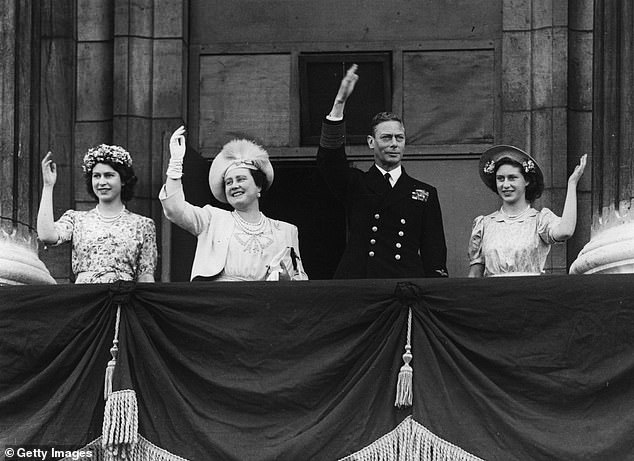
The Royal Family wave to jubilant crowds from the Buckingham Palace balcony on VJ Day, August 15, 1945. Left to right: Princess Elizabeth, Queen Elizabeth, King George VI and Princess Margaret
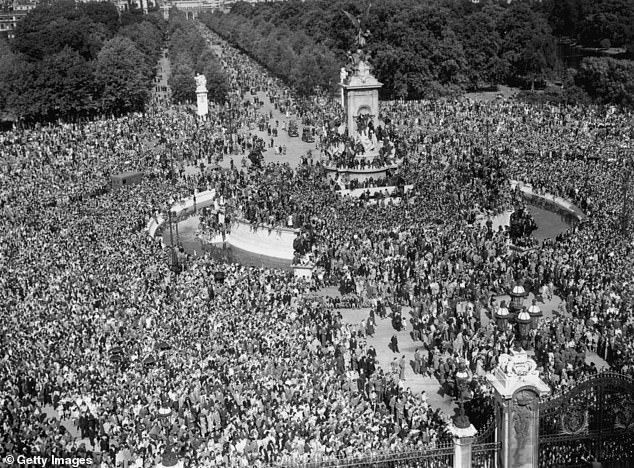
Jubilant crowds gather outside Buckingham Palace, hoping to see the King, following news of Japan’s surrender, August 10, 1945
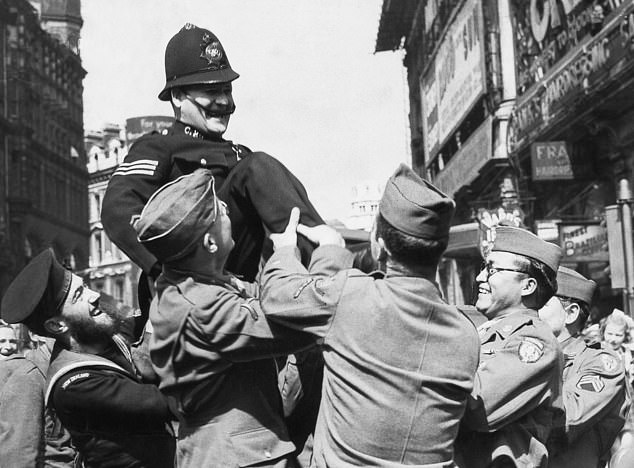
A policeman is held aloft by American military men in London on VJ Day, August 15, 1945
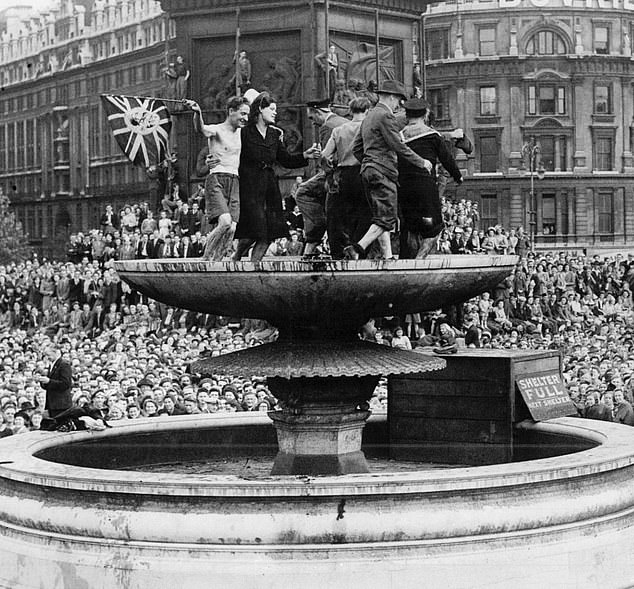
Londoners celebrate VJ Day in Trafalgar Square, August 15, 1945. Some naughty men and women climbed onto the fountain
There were said to have been ‘plenty of police’, but ‘nobody noticed them’.
Thousands of the revellers ended up sleeping on the streets because there were nowhere near enough trains, trams and buses to get them home.
It was not just London that celebrated. In Dover on the Kent coast, the castle was floodlit for the first time since 1939 and a 60foot bonfire was visible in France.
The King’s speech was relayed by a loud speaker that had until then been used for shell warnings.
In Hastings, East Sussex, more than 10,000 holiday-makers packed the sea front and danced in the streets.
In Portsmouth, the Navy put on a searchlight display, and in Plymouth, fireworks were fired from ships.
In Nottingham, thousands of people danced in the streets despite the rain.
In Manchester, revellers – among them sailors in uniform – gathered in the city’s Albert Square to celebrate.
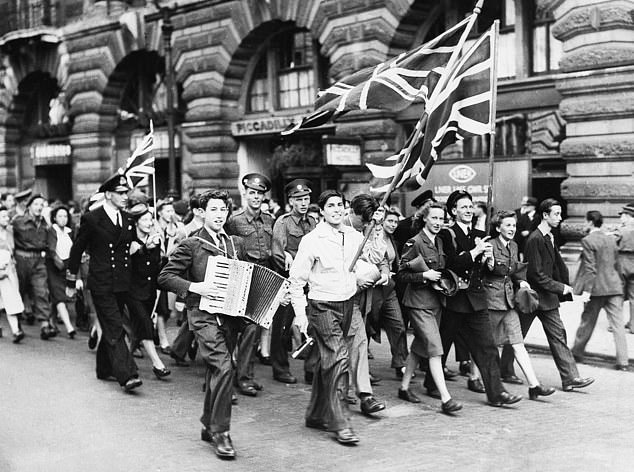
Servicemen and women celebrate with other Londoners in Piccadilly on VJ Day, August 15, 1945
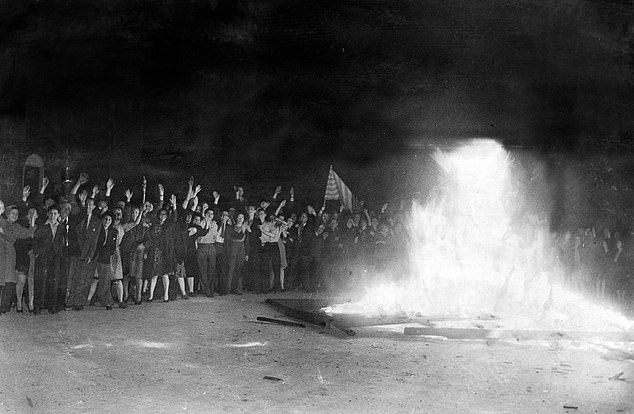
Londoners and Americans celebrate around a huge bonfire in Chinatown, August 14, 1945
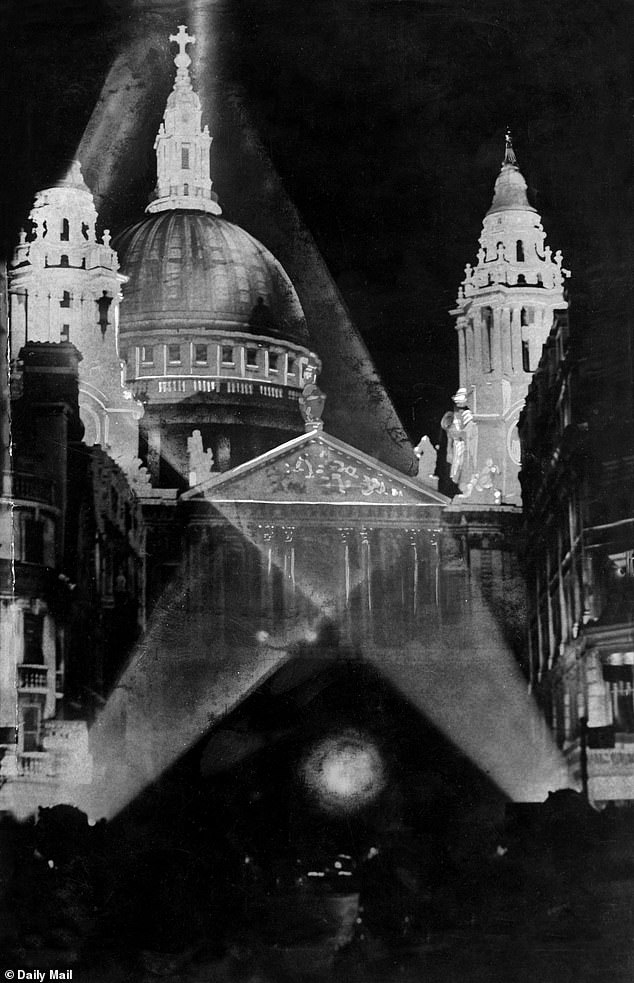
St Paul’s Cathedral is seen lit up by flood lights during VJ Day celebrations, August 15, 1945
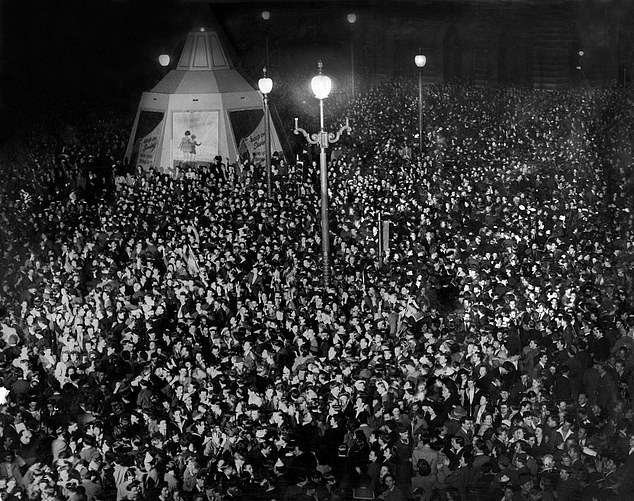
The enormous crowd gathered at Piccadilly Circus on August 15, 1945
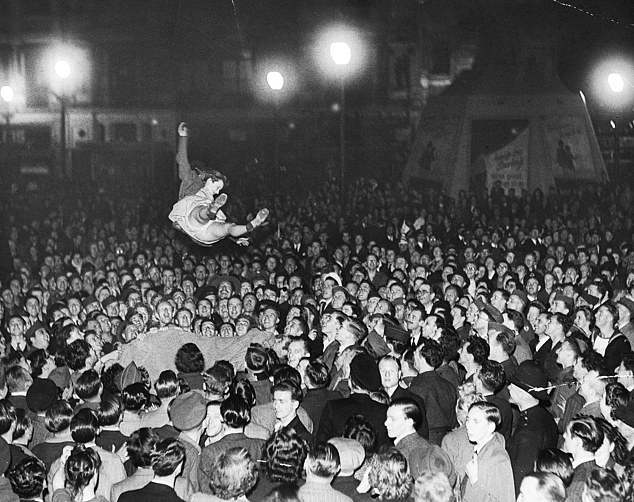
This is the scene in Piccadilly Circus at three o’clock in the morning at the height of the VJ Day celebrations, August 14, 1945
VJ Day happened to coincide with the State Opening of Parliament following the election that had swept Labour into office just weeks earlier.
King George VI told the massed MPs and Lords: ‘The surrender of Japan has brought to an end six years of warfare which have caused untold loss and misery to the world.
‘In this hour of deliverance, it is fitting that we should give humble and solemn thanks to God by whose grace we have been brought to final victory.
‘My Armed Forces from every part of my Commonwealth and Empire have fought with steady courage and endurance.
‘To them as well as to all others who have borne their share in bringing about this great victory and to all our Allies our gratitude is due.’
In a separate address to the British people, King George said: ‘The war is over. You know, I think, that those four words have for the Queen and myself the same significance, simple yet immense, that they have for you.
‘Our hearts are full to overflowing, as are your own.
‘Yet there is not one of us who has experienced this terrible war who does not realise that we shall feel its inevitable consequences long after we have all forgotten our rejoicings of today.’
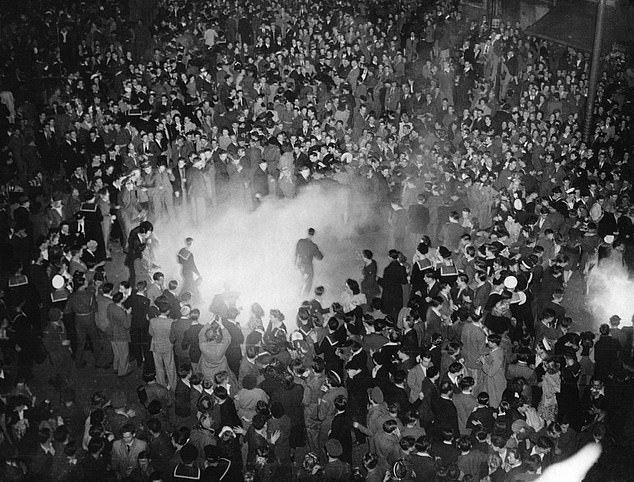
Crowds dancing in Piccadilly Circus celebrating the victory over Japan, August 15, 1945
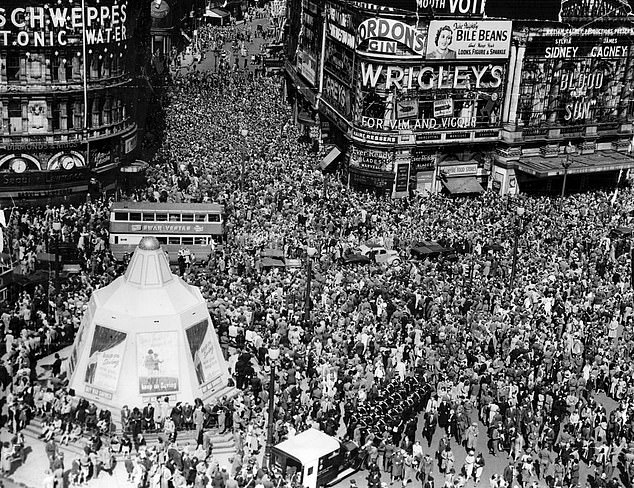
Crowds gathered in Piccadilly Circus and Shaftesbury Avenue with St. John Ambulance crews ready for an emergency in the foreground, August 15, 1945
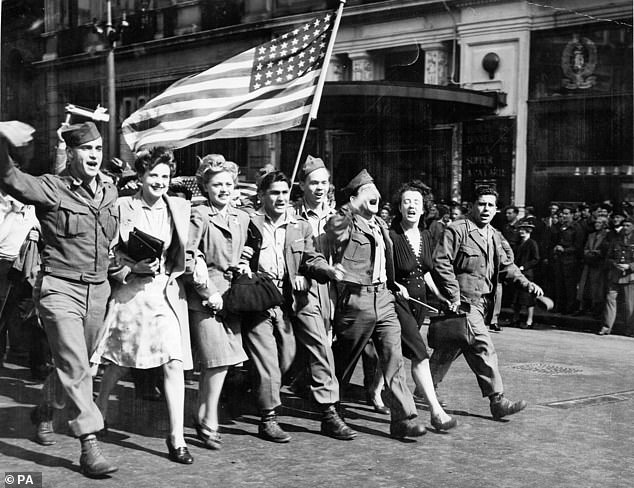
American soldiers parade the ‘Stars and Stripes’ through Piccadilly Circus, London, during VJ Day celebrations
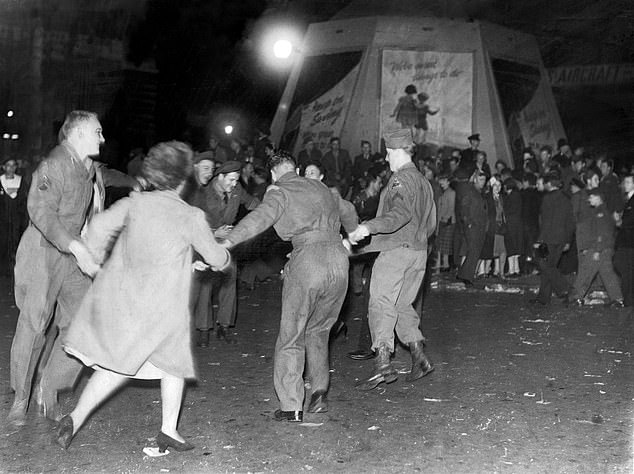
VJ Day celebrations in London. A crowd singing and dancing in Piccadilly Circus, August 14, 1945
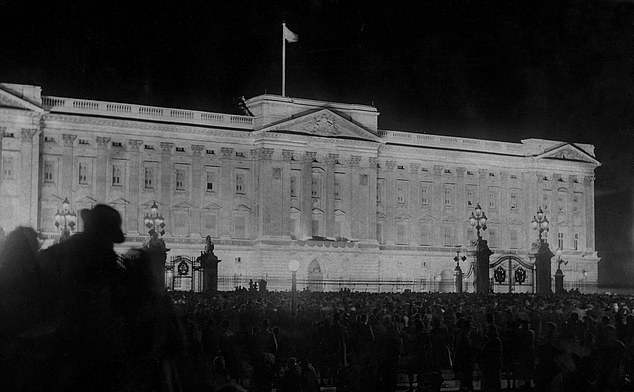
Jubilant crowds outside Buckingham Palace in the early hours of August 16, 1945
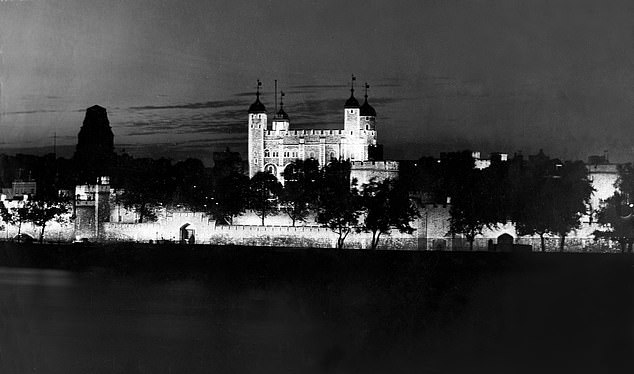
A floodlight Tower of London is seen in the early hours of August 16, 1945, as the capital celebrated VJ Day
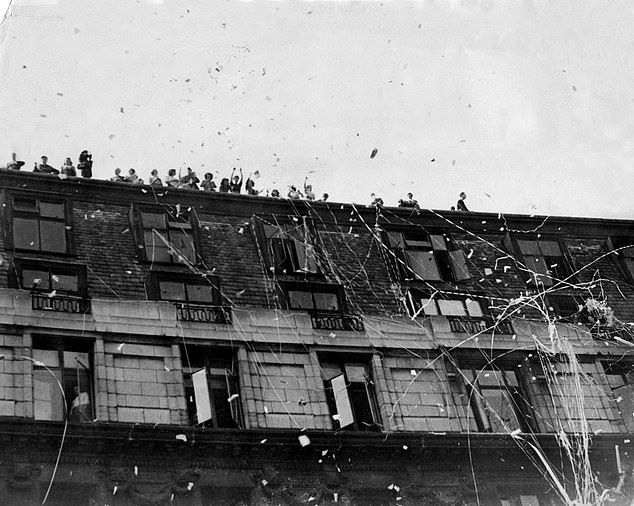
Office workers on the roof of their office building in Aldwych throwing tape and paper into the street below during VJ Day celebrations, August 10, 1945
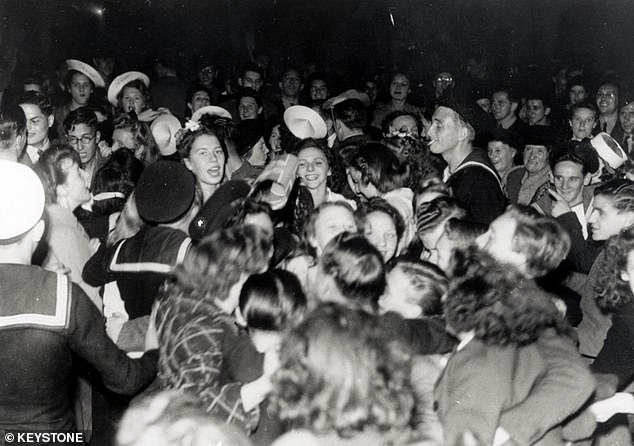
Crowds dancing and singing in Piccadilly Circus after news of Japan’s impending surrender emerges, August 11, 1945
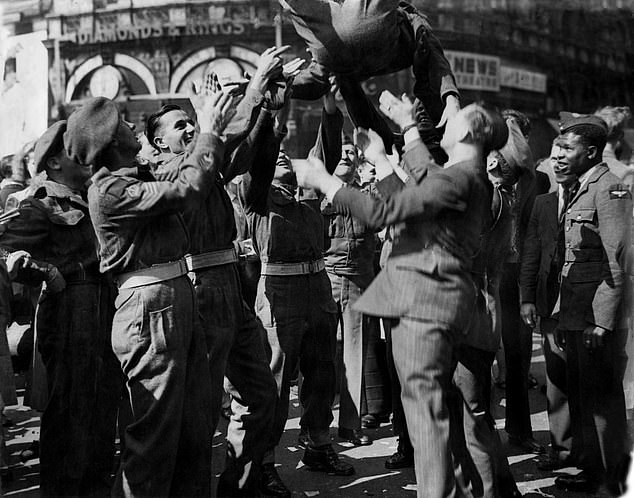
Soldiers throw a comrade into the air at Piccadilly Circus as they celebrate VJ Day, August 10, 1945
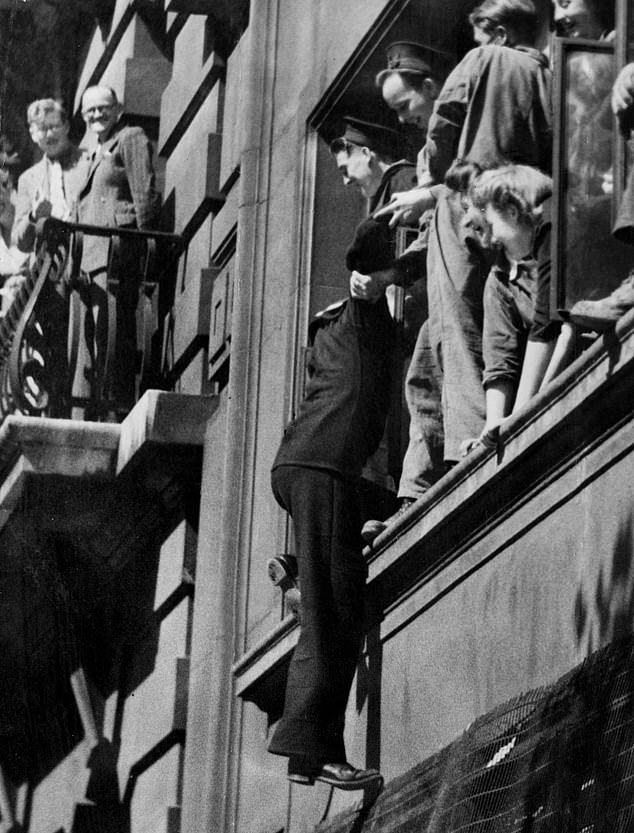
A sailor climbing into a window in Aldwych during VJ Day celebrations, August 10, 1945
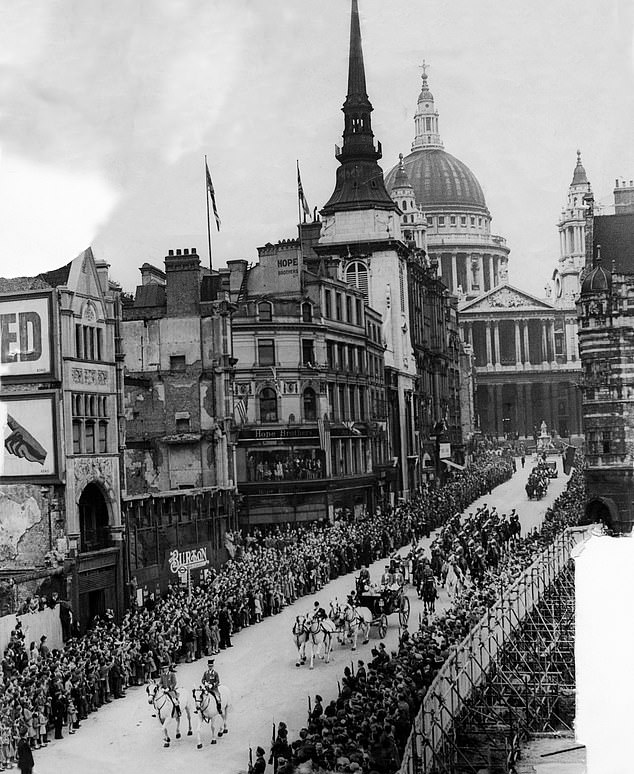
Crowds line the streets to watch the passing of the Royal procession after a service at St Paul’s Cathedral, August 19, 1945
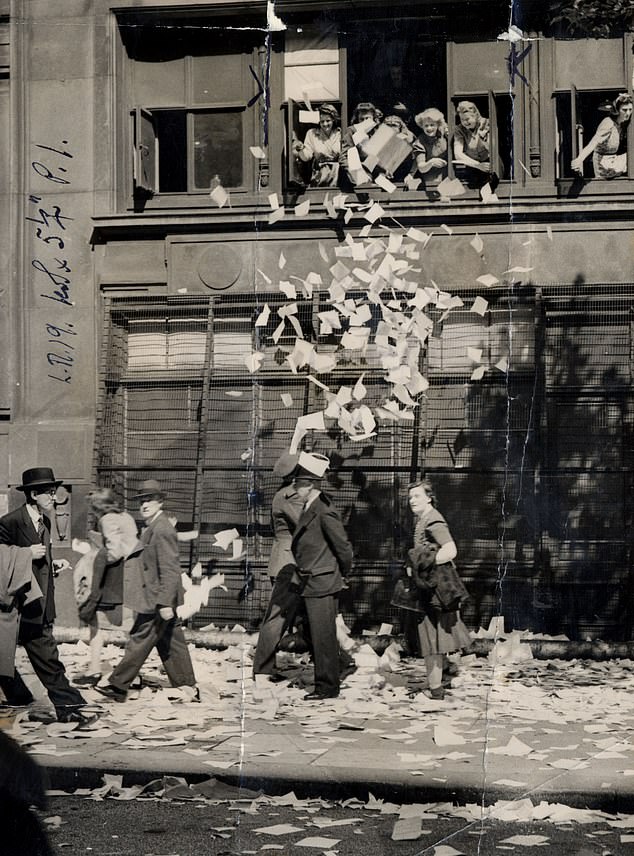
Workers at the Air Ministry letting loose a shower of papers from their office window after they heard news of Japan’s surrender, August 10, 1945
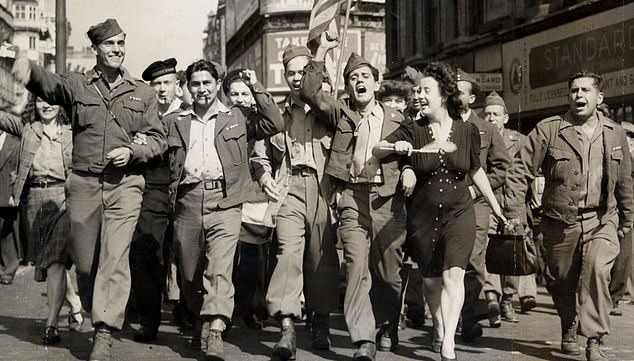
Americans celebrate with Londoners after news of Japan’s impending surrender, August 10, 1945
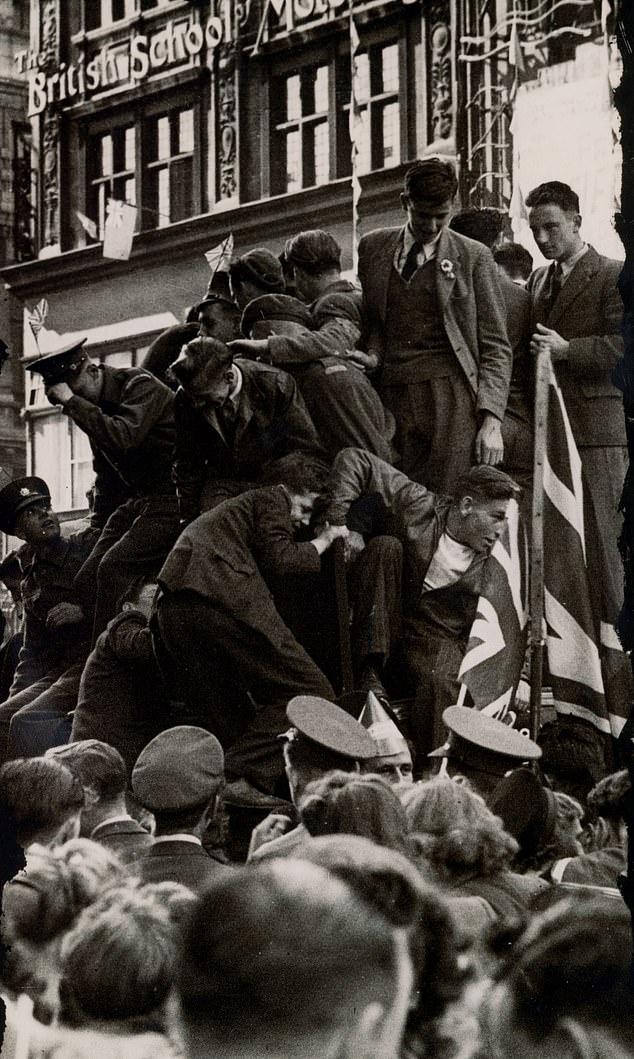
Soldiers and sailors trying to get a better view of VJ Day celebrations, August 19, 1945
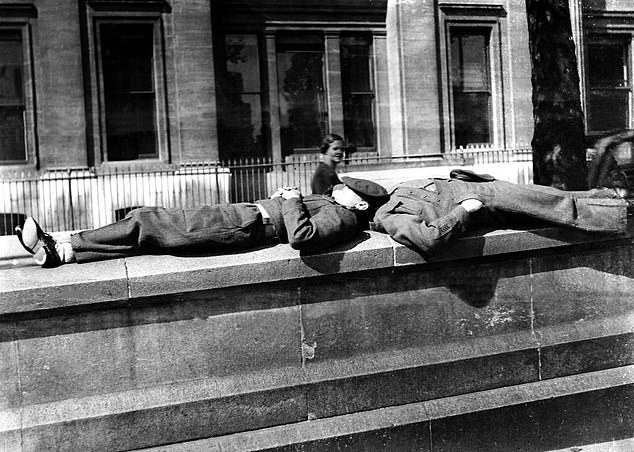
Two soldiers lie down with their caps over their eyes, the VJ Day celebrations seemingly passing them by, August 16, 1945
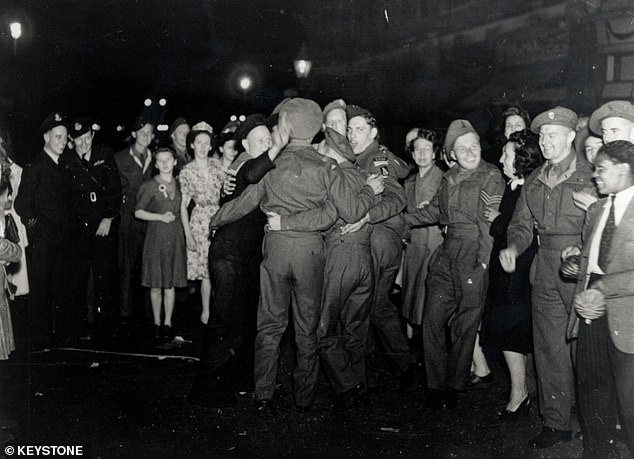
Soldiers celebrate during VJ celebrations in London, August 11, 1945
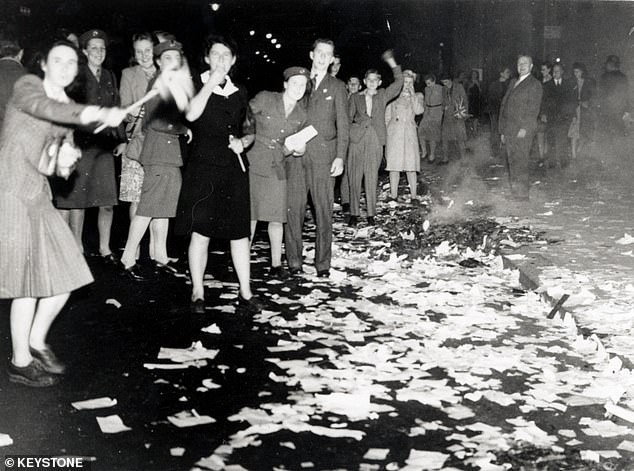
Revellers crowd around a bonfire in Lower Regent Street during VJ celebrations, August 11, 1945
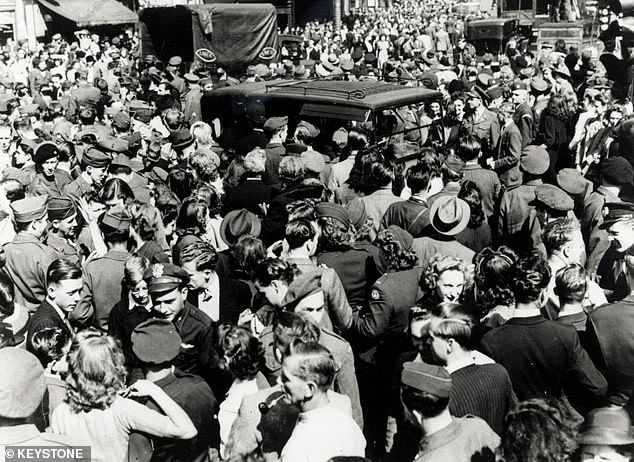
A crowd in Piccadilly stopping the traffic as they celebrate the end of the war, August 11, 1945
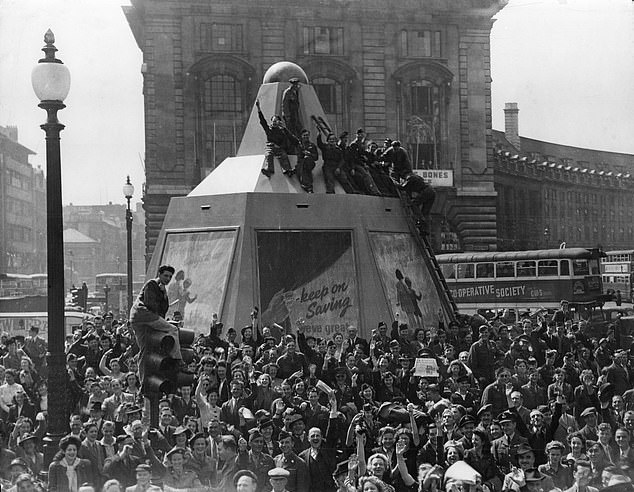
A cheering crowd at Piccadilly Circus on August 10, 1945, after news of Japan’s imminent surrender emerged. One man has climbed the traffic lights
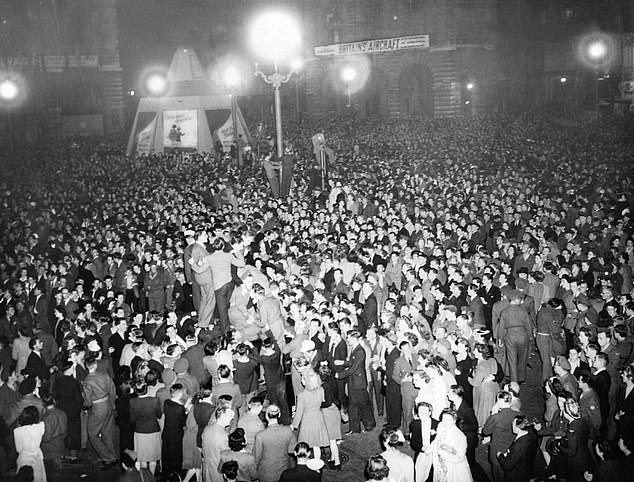
Crowds gathered in Piccadilly Circus celebrating the imminent surrender of Japan, August 10, 1945
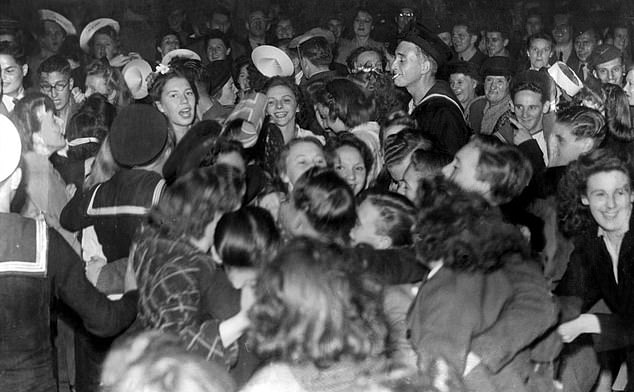
Picture shows crowds dancing and singing in Leicester Square after the first news of an imminent Japanese surrender was heard, August 10, 1945
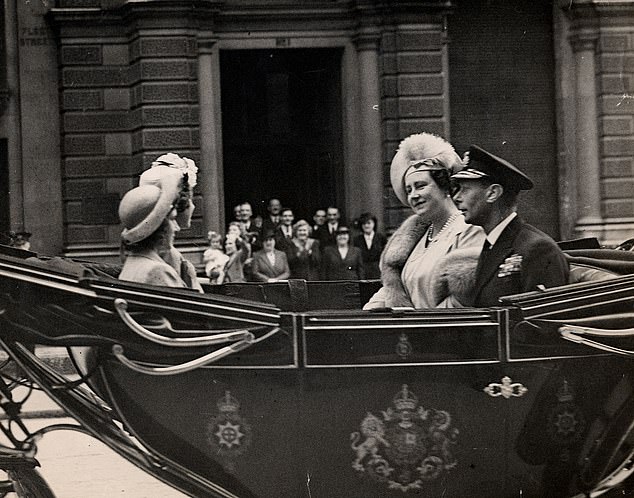
eorge VI, Queen Elizabeth, Princess Margaret and Queen Elizabeth II in a horse drawn carriage on their way to a Thanksgiving Service at St. Paul’s Cathedral, August 19, 1945
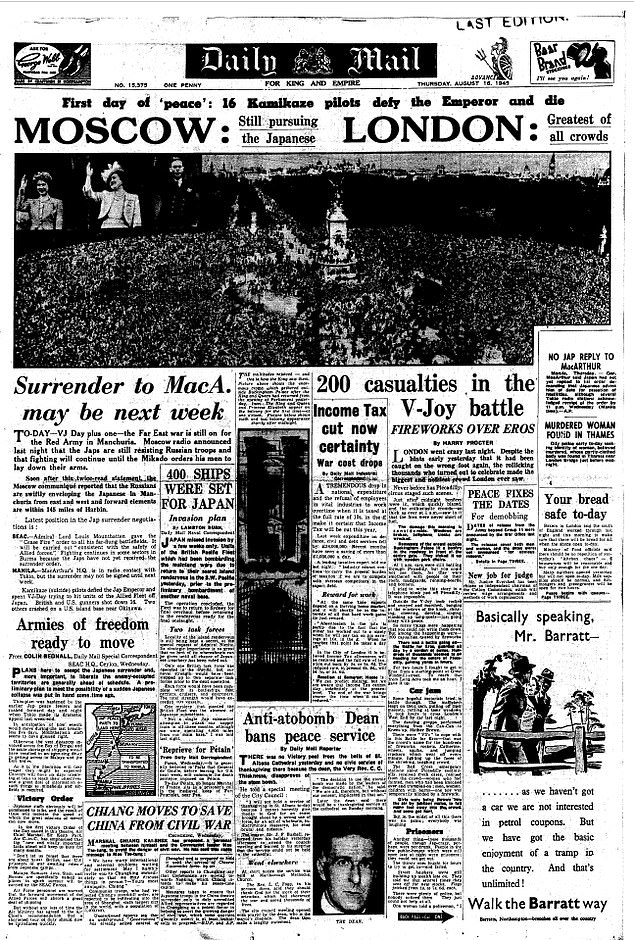
The Daily Mail’s front page on August 16, 1945, the day after VJ Day
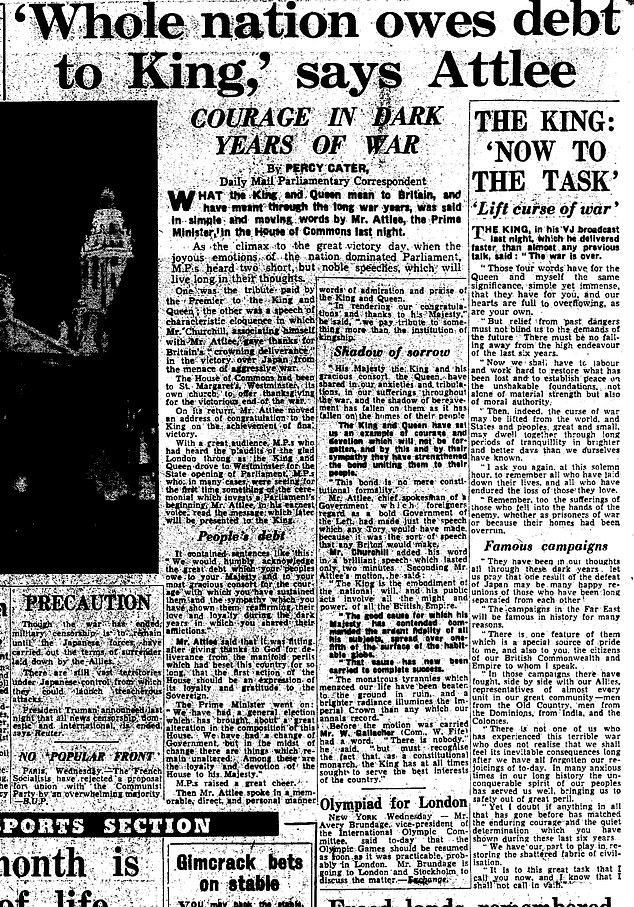
The Mail’s coverage of prime minister Clement Attlee’s address to the nation
Prime Minister Clement Attlee told the public in his radio address: ‘Japan has today surrendered. The last of our enemies is laid low.
‘Taking full advantage of surprise and treachery, the Japanese forces quickly overran the territories of ourselves and our allies in the Far East and at one time it appeared as though they might even invade the mainland of Australia and advance far into India.
‘But the tide turned, first slowly then with an ever-increasing speed and violence as the mighty forces of the United States and of the British Commonwealth and Empire and of their allies and finally of Russia were brought to bear.’
He finished the broadcast by telling the nation: ‘When we return to work on Friday morning we must turn again with energy to the great tasks which challenge us.
‘But for the moment let all who can relax and enjoy themselves in the knowledge of work well done.
‘Peace has once again come to the world. Let us thank God for this great deliverance and his mercies. Long live the King!’












